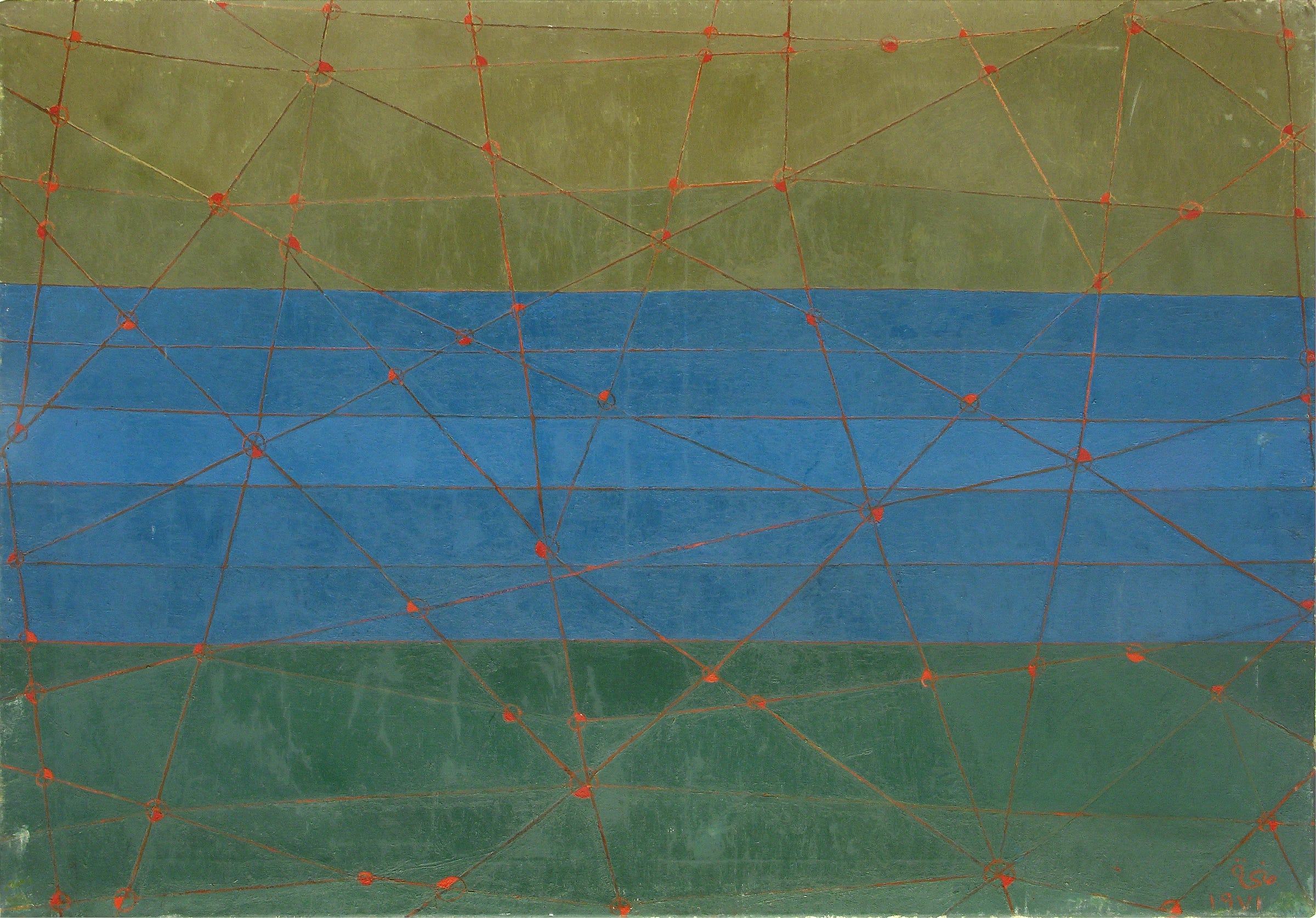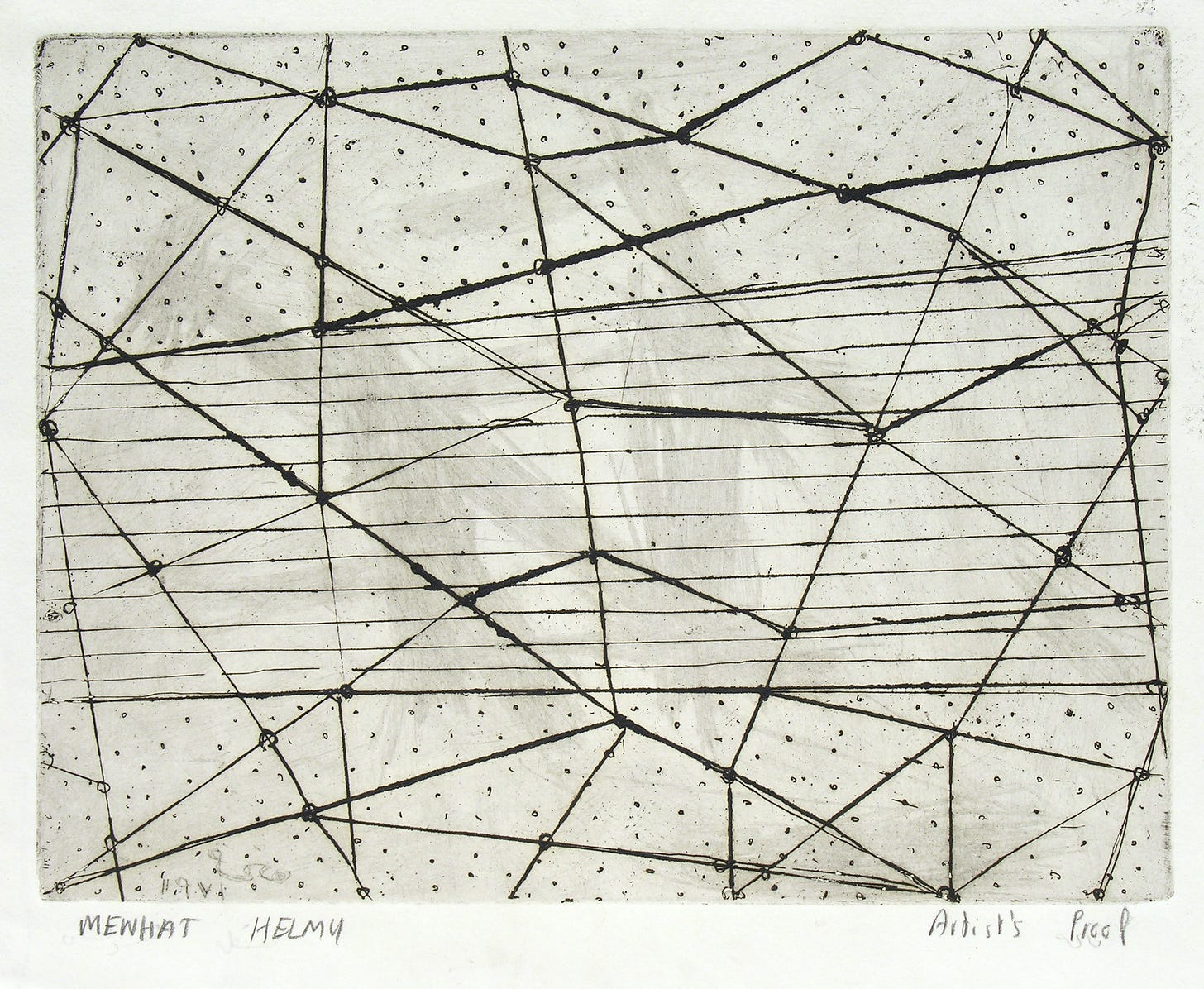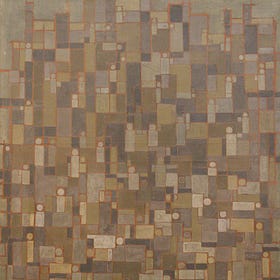Exchange of Fire
My grandmother seldom portrayed war in her artwork, with the exception of the Egypt-Israel conflicts, which held particular significance for her.
The Art of Menhat Helmy is a newsletter and platform supported by its readers and managed solely by the artist's family. Our goal is to persist in showcasing Helmy's groundbreaking artwork and to inspire emerging Arab artists.
If you haven't already, we encourage you to consider becoming a paid subscriber.
The period between 1967 and 1973 brought the winds of change to an Egypt at the height of pan-Arabism.
The 1967 Arab-Israeli war – commonly referred to as Al-Naksah (The Setback) by Egyptians – was a humiliating defeat for Egypt, Syria and Jordan and highlighted the Arab states’ poor leadership and military strategies. Israel crippled its opposition with a well-enacted strategy, allowing them to seize the Gaza Strip and Sinai Peninsula including the West Bank, East Jerusalem from Jordan, and the Golan Heights from Syria. Nasser subsequently resigned in shame but was reinstated after nationwide protests against his resignation. Nasser remained in power until his sudden death on 28 September 1970.
As with many artists and intellectuals in the region at the time, my grandmother, Mehat Helmy, was profoundly impacted by the events that unfolded between 1967 and 1970.
Throughout the course of a career that spun nearly four decades, the aforementioned three-year period was the only time that Helmy did not produce any new artistic works.
This would change in 1971.
Inspired by the tumultuous events of the previous years, Helmy turned to abstraction for the first time and painted a piece depicting the War of Attrition, which lasted from 1967 until 1970.
Titled Exchange of Fire—or تراشق النيران in Arabic—the painting shows the military strikes taking place between Egypt, depicted in brown, and Israel, depicted in green, with the Red Sea as their separation, in blue. There are red lines streaked across the painting, fired from all sides like cannons at war.
Though they may appear random, there is a remarkable spatial synergy present in the piece – a distinctive characteristic that came to define Helmy’s work. Even her pivot to abstraction was geometric in nature, rooted in deep spirituality and inspired by Islamic art.
Helmy went on to create a second version of this piece in the form of an etching, which offers a different perspective on the work while staying true to her love of printmaking.
Fueled by the turbulent political climate and further drawn to her brush and canvas, Helmy painted a second piece in 1971 titled The Children of Bahr Al Baqar, which portrayed the primary school bombing that took place in the Egyptian village of Bahr El-Baqar (south of Port Said, in the eastern Sharqia governate) on April 8, 1970.
The school was bombed by the Israeli Air Force, killing 46 children and injuring dozens more. The entire school population at the time was 130 students split between three classrooms. Israel later claimed that they thought that the school was an Egyptian military base.
Remembering the Children of Bahr al-Baqar
It was 9:20am on a Wednesday morning in April 1970 when the Israeli Air Force bombed a primary school in the Egyptian village of Bahr al-Baqar, killing 46 children and injuring dozens more. The entire school population at the time was 130 students split between three classrooms. The massacre wiped out approximately one third of those students.
As Israel continues its onslaught and destruction of Gaza's southernmost town of Rafah, where more than half the enclave's population of 2.3 million Palestinians has sought refuge, I can’t help but think of my grandmother and how she would feel as she witnessed the ethnic cleansing of an entire people.
The Art of Menhat Helmy is a newsletter and platform supported by its readers and managed solely by the artist's family. Our goal is to persist in showcasing Helmy's groundbreaking artwork and to inspire emerging Arab artists.
If you haven't already, we encourage you to consider becoming a paid subscriber.





